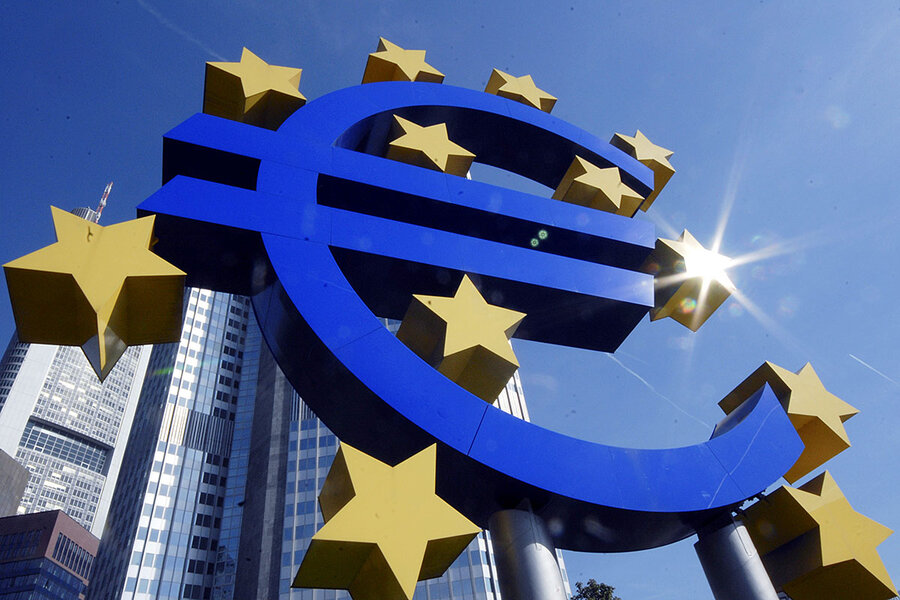National debt: How high is too high?
Loading...
Q: What is national debt, and why is it important?
National debt is a measure of how much money a government has borrowed, and thus how much it owes. When compared with other factors, such a figure can provide keen insight into a country’s fiscal health.
Perhaps the most important number to consider alongside national debt is a country’s gross domestic product. The critical question, says Jeffrey Frankel, an economics professor at Harvard Kennedy School in Cambridge, Mass., is whether debt is growing faster or slower than GDP. The situation is considered stable, Dr. Frankel adds, “if national debt is decreasing as a share of GDP.”
Q: Is there an ideal level of national debt?
In short, no. The level of debt a country can safely handle depends on a multitude of factors. Generally, rising debt can cause economic strain: A bigger portion of government expenditures has to be set aside for interest payments, for example.
Yet at times, more borrowing may make sense. If the economy is stagnating, the government may want to increase spending as a stimulus, perhaps by investing in big infrastructure projects.
The optimal level of debt for any given country, explains Nicolas Véron of the Peterson Institute for International Economics in Washington, “depends upon its creditworthiness – its ability to pay back.”
Q: Why are the levels of national debt so different between developed and developing countries?
As the charts illustrate, developed countries hold vastly greater levels of national debt than developing countries. The reason, Mr. Véron says, is “market discipline”: Investors are less inclined to lend to emerging markets, where they perceive greater risk.
“The more creditworthy you are, the more you can borrow,” Véron adds. “It’s true of individuals; it’s true of countries.”
Q: Is the national debt in the United States likely to change under President Trump?
Since the 1980s, US national debt has been surging, with it now close to $20 trillion. As a percentage of GDP, it has also been rising, though there have been spurts during which the budget deficit was reduced, most notably during President Bill Clinton’s second term, when there was actually a surplus.
Although it is impossible to predict with certainty what will happen now, most analysts expect – and Mr. Trump’s own words suggest – big tax cuts and big spending increases, which would mean a rising national debt. If a splurge on infrastructure can boost growth, GDP might keep pace with national debt, but some analysts, including Frankel of Harvard, are doubtful that would occur.
Q: What role has national debt played in Europe’s recent financial struggles?
Some analysts wonder whether too much austerity was imposed to deal with the crisis that seized Europe starting in 2009 – or at least whether it was imposed in the wrong way, at the wrong time.
Although Greece has been considered an advanced economy, Véron says, it had “lots of features of emerging markets.” Thus its debt levels before the crisis were far higher than they should have been.
Frankel agrees with Véron, saying that Greece needed austerity before 2008 but didn’t have it; then, when the economy was already on its knees, austerity was imposed. He refers to renowned British economist John Maynard Keynes: It’s in the boom times that governments should cut back.








